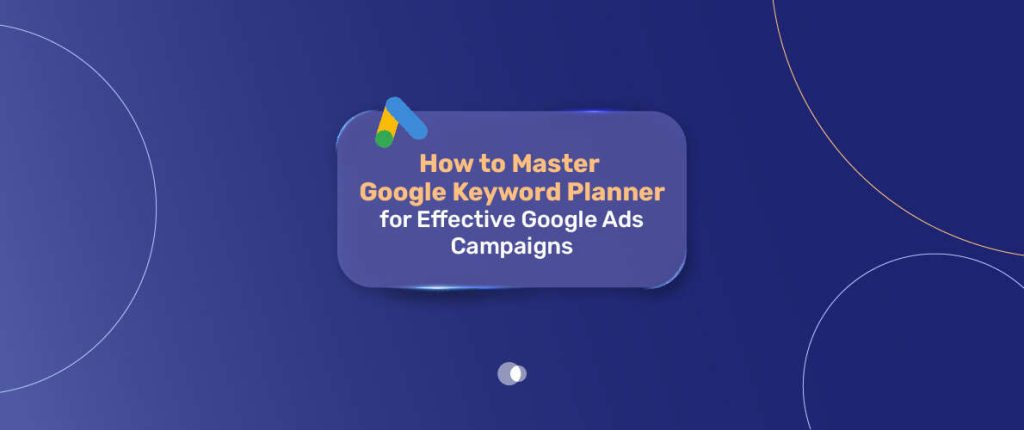Keyword research is the heartbeat of successful Google Ads campaigns, and Google Keyword Planner is your go-to tool for unlocking its potential. Whether you’re a small business owner or a seasoned marketer, this free tool within Google Ads helps you discover the right keywords, understand search trends, and optimize your ad spend for maximum impact. Partnering with a Google ads agency in Dubai can further enhance your strategy, ensuring expert guidance and better results.
Table of Contents
This guide breaks down how to use Google Keyword Planner effectively, leveraging its latest features as of May 2025, to craft campaigns that connect with your audience and drive results.
Why Google Keyword Planner Matters
Google Keyword Planner is more than just a tool—it’s your window into how people search for your products or services. By providing insights into search volumes, competition levels, and cost estimates, it empowers you to make data-driven decisions.
Whether you’re launching a new campaign or refining an existing one, mastering this tool can mean the difference between wasted ad spend and a campaign that converts.
Key Benefits:
- Discover New Keywords: Find terms your audience is searching for, including niche long-tail keywords.
- Understand Search Trends: Analyze seasonal and mobile trends to time your campaigns perfectly.
- Optimize Budgets: Use forecasts to allocate your ad spend wisely and maximize ROI.
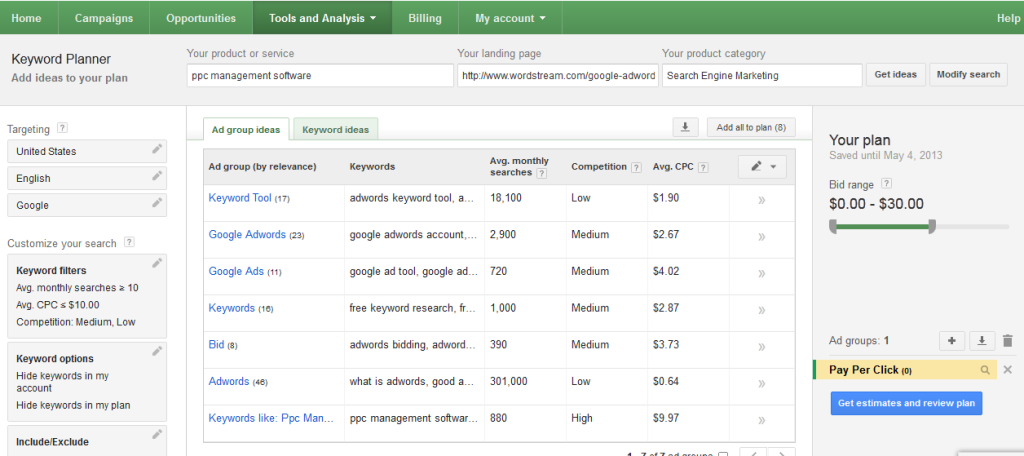
Getting Started with Google Keyword Planner
Google Keyword Planner is your starting point for building effective Google Ads campaigns. It’s user-friendly, free, and packed with features to help you uncover the right keywords. To begin, you’ll need to access the tool and understand its core functions. Here’s how to dive in.
Step 1: Access the Tool
To use Google Keyword Planner, you need a Google Ads account. Don’t worry—you don’t need to run an active campaign to start exploring. Here’s how to get in: consider the option to buy Google agency account for instant access and enhanced features tailored for advertisers.
- Sign into your Google Ads account.
- Click the Tools icon (wrench) in the top navigation.
- Select Planning > Keyword Planner from the dropdown.
If you’re in Smart Mode, switch to Expert Mode for full access. You may need to enter billing information to unlock all features, but the tool itself is free.
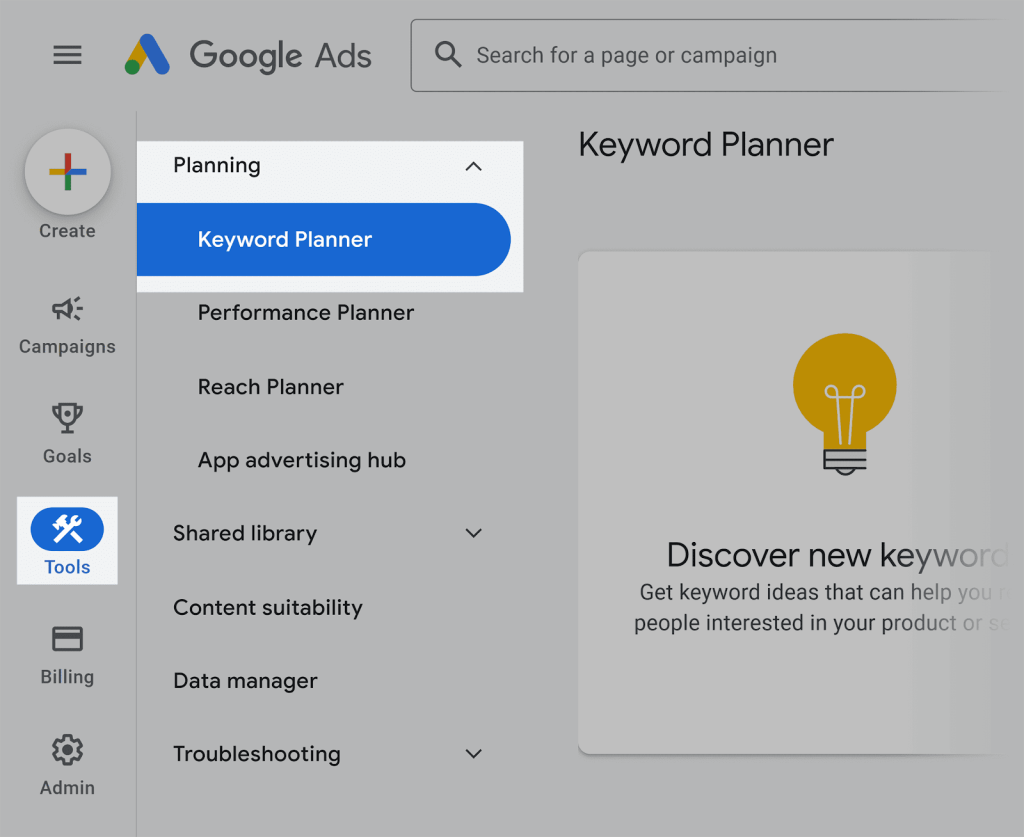
Step 2: Understand the Interface
The Keyword Planner offers two main functions:
- Discover New Keywords: Generate ideas based on your products, services, or website.
- Get Search Volume and Forecasts: Analyze performance metrics and predict campaign outcomes.
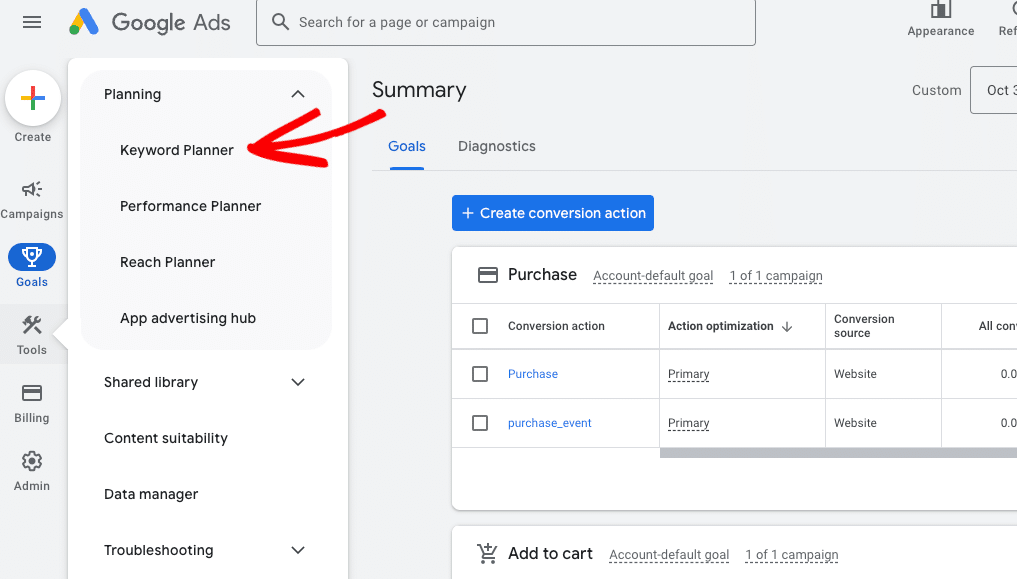
Step-by-Step Guide to Mastering Google Keyword Planner
Here’s a clear, actionable plan to harness the tool’s full potential for your Google Ads campaigns.
Discover Keywords That Match Your Business
Start by selecting Discover new keywords. You have three options:
- Start with Keywords: Enter terms like “organic coffee” or “handmade jewelry” to generate related ideas.
- Start with a Website: Input your site or a competitor’s URL to pull keyword suggestions based on content.
- Upload or Paste: Import a list of keywords for analysis.
Pro Tip:
Combine keywords and your website URL for a broader range of suggestions. Use the new Location Breakdown feature to see how searches vary by region, perfect for local businesses.
Analyze Key Metrics
Once you have a keyword list, focus on these metrics:
- Average Monthly Searches: Indicates potential reach.
- Competition Level: Shows how many advertisers are bidding (low, medium, high).
- Top of Page Bid: Estimates the cost to rank at the top of search results.
Use Time Bound Reports to spot seasonal trends and Change in Search Volume to identify rising keywords. For example, searches for “winter jackets” might spike in October.
Refine and Filter Keywords
Narrow your list to the most relevant terms using filters:
- Keyword Text: Include or exclude specific words (e.g., “organic” for coffee-related campaigns).
- Search Volume: Focus on keywords with enough traffic but low competition.
- Location and Language: Target specific regions or languages for precision.
Add irrelevant terms as negative keywords to avoid wasting budget on unqualified clicks.
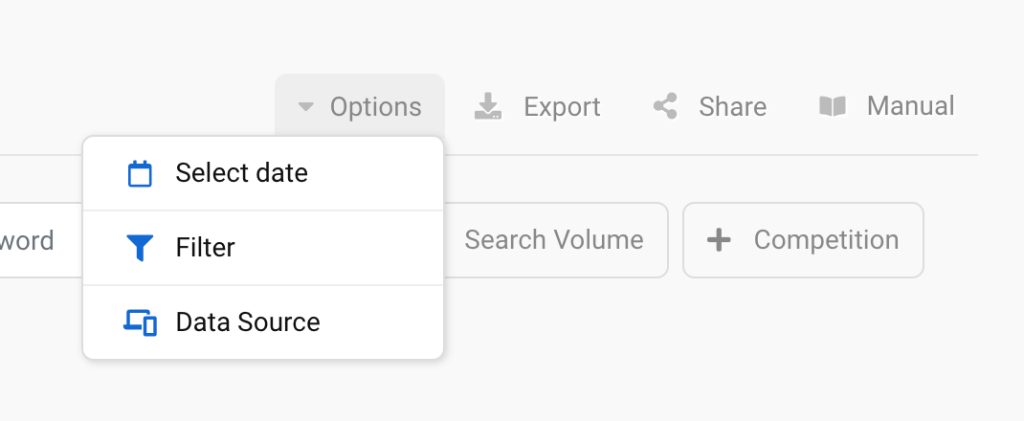
Organize Keywords into Ad Groups
Group similar keywords into ad groups for better ad relevance. For example, if you sell running shoes, create separate ad groups for “men’s running shoes” and “trail running shoes.” The Auto-Organize Keywords feature (new in 2025) can suggest groupings based on themes, saving you time.
Example Ad Group Structure:
| Ad Group | Keywords |
| Men’s Running Shoes | men’s running shoes, best men’s sneakers |
| Trail Running Shoes | trail running shoes, off-road sneakers |
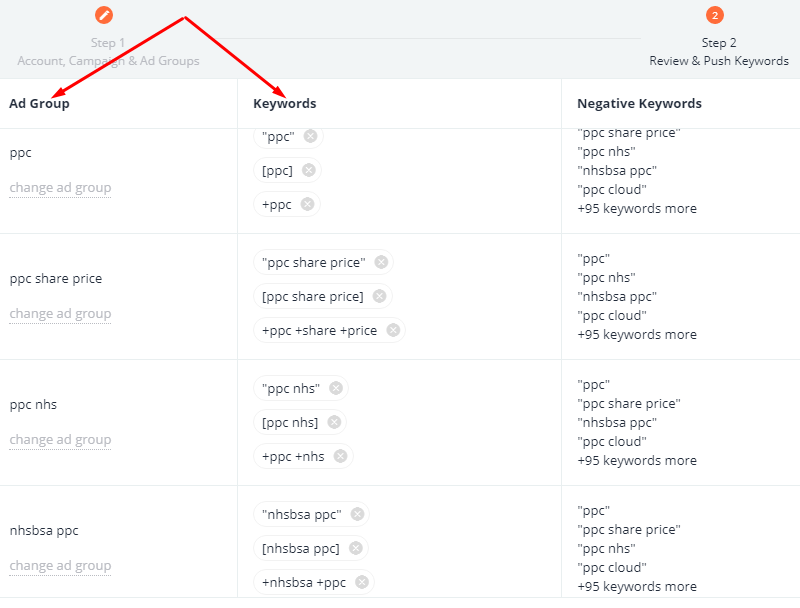
Forecast Performance and Set Bids
Use the Get search volume and forecasts tool to predict clicks, impressions, and costs. Adjust your budget and bids using:
- Flexible Period Estimates: See daily, monthly, or annual projections.
- Device Segmentation: Optimize for mobile users with the Mobile Trends Report.
- Sub-Geo Bid Adjustment: Increase bids for high-performing regions.
Pro Tip:
Start with an average of the low and high Top of Page Bid estimates to set competitive bids.
Launch and Optimize Your Campaign
Build your campaign using the refined keyword list and ad groups. Write ad copy that incorporates high-intent keywords (e.g., “buy organic coffee online”) and aligns with user intent. Monitor performance regularly and use Time Period Search Volume Comparison to adjust for seasonal trends. For best results, consider working with Google Ads optimization services Dubai to fine-tune your campaigns and maximize ROI.

Advanced Tips to Elevate Your Strategy
To take your Google Keyword Planner skills to the next level, incorporate these advanced strategies to refine your campaigns and boost performance.
| Strategy | Description | Why It Works |
| Target Long-Tail Keywords | Focus on specific phrases like “best organic coffee beans for espresso” with lower competition. | Higher conversion rates due to precise user intent and less competition. |
| Analyze Competitors | Enter a competitor’s URL to uncover their keyword strategy and identify gaps. | Reveals untapped opportunities to reach audiences your competitors might miss. |
| Leverage Mobile Trends | Use the Mobile Trends Report to prioritize mobile-optimized keywords. | Captures growing mobile search traffic for better ROI. |
| Plan for Seasonality | Use Time Period Search Volume Comparison to time campaigns for peak seasons (e.g., “Christmas gifts” in November). | Aligns campaigns with high-demand periods for maximum impact. |
| Refine with Negative Keywords | Check search terms report regularly to add irrelevant terms as negative keywords. | Saves budget by preventing ads from showing for unqualified searches. |
| Use Question-Based Keywords | Target phrases like “how to choose running shoes” to attract solution-seekers. | Draws in users with specific needs, increasing engagement and conversions. |
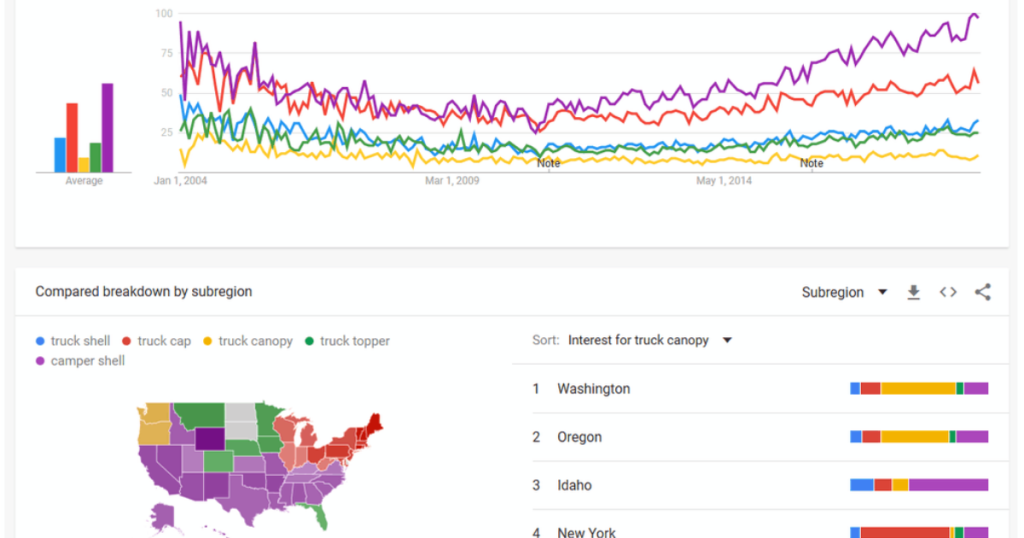
Common Challenges and How to Overcome Them
Google Keyword Planner is powerful, but it has quirks. Here’s how to tackle common issues:
- Broad Search Volume Ranges: Estimates like “100K–1M” can be vague. Cross-reference with tools like Google Trends for clearer insights.
- Limited Keyword Suggestions: For more ideas, use competitor URLs or explore the “People also ask” section in Google Search.
- High Competition Keywords: Focus on long-tail or niche terms to reduce costs and improve targeting.
Common Pitfalls and Solutions
| Challenge | Solution |
| Vague search volume ranges | Use Google Trends or SEMrush for precise data. |
| Overloading ad groups | Keep ad groups tightly themed (5–20 keywords per group). |
| Ignoring search intent | Analyze SERPs to match keywords with user goals (informational, transactional). |
Conclusion
Mastering Google Keyword Planner is about more than just finding keywords—it’s about understanding your audience, optimizing your budget, and staying ahead of trends. By following the steps above, leveraging 2025 features like Device Segmentation and Sub-Geo Bid Adjustment, and applying advanced strategies, you can create Google Ads campaigns that deliver real results—especially with expert-level AdWords management Dubai.
Keep experimenting, monitor performance, and refine your approach to stay competitive in the ever-evolving world of digital advertising.
Frequently Asked Questions
Do I need an active Google Ads campaign to use Keyword Planner?
No, but you need a Google Ads account. Some features, like precise search volumes, may require billing information or active campaigns.
How accurate are Keyword Planner’s search volume estimates?
They’re estimates, often shown as ranges (e.g., 10K–100K). For more precision, complement with tools like Google Trends or SEMrush.
What are long-tail keywords, and why should I use them?
Long-tail keywords are longer, specific phrases (e.g., “best running shoes for flat feet”). They have lower competition and higher conversion rates.
How do I use negative keywords effectively?
Review your search terms report regularly to identify irrelevant queries and add them as negative keywords to avoid wasted spend.
What’s new in Google Keyword Planner for 2025?
New features include Time Bound Reports, Mobile Trends Report, Location Breakdown, and Auto-Organize Keywords for better targeting and efficiency.


